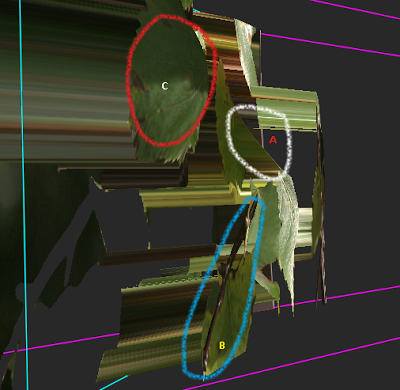FOR PC and NVIDIA USERS
Ever wondered why nothing ever looks right on you PC or Laptop? Everything you use to play media on messes with your set ups, just like that new 60inch screen you took delivery of last week - looks like hell until you turn off all the "auto" settings and align the monitor to deliver an acceptable image from a known source - something you shot, edited and know intimately.
So far so good - look at the video controls available for windoze media player, or VLC or anything else - you can tweak them, but they often get dumped when you change media or when you restart your system - not too helpful.
1) Make a nice mp4 HD file of something you know well - this will play in almost everything, especially if you encode using "Main" profile and not "High" This will stop good old Quicktime Player from freekin out. Use a high data rate like 15mbs. You can also download my two set-up files below if you prefer.
2) Right click on your Laptop or PC monitor and access the NVidia Control Panel, select video at the bottom, and "Adjust Video Colour Settings" Now take control of your system and answer the question "How do you make colour adjustments" answer: "With the Nvidia Settings! This will enable YOU to decide what your media player windows look like and not some random application.
set up as shown here:
These are settings for my Sony Vaio, it stops burn-out and excessive contrast, setting the dynamic range to 0-255 forces the player to show correct black levels as well as unclipped peaks.
Newer NVidia Drivers will display the above options - make sure these are un-ticked.
Now you are in control, set your screen to provide exactly the viewing parameters you need - making it possible to use your laptop as a basic reference - it will never be perfect, but this may help.
If you use Power DVD player, make sure you turn on Nvidia hardware Acceleration which will turn off all the pre-set visual excitement available from Cyberlink, and will render your images to your personal setting.
Use My Files Here:
Black Level Set-Up File
Start with this this black level file, it has 0% black, 5% and 10% with a centre 3% chip. Make sure you can just see the centre 3% chip - and I mean JUST. Start with the controls set to 50% then reduce the brightness one notch at a time and update each time, then play - this is very sensitive - you will find a point when the 3% chip vanishes, just add one and you are ready to adjust the contrast.
Peak White Set-up File
Now open this Peak White set up file, after downloading it. It has a 100% white background, a 98%, 95% and 90% chip. View this file on your media player - can you see all 3 areas? the 98% will just show against the 100% background when correctly set - if not, reduce the contrast setting in your Nvidia Contol Panel in 1% increments until you see the 3 areas - remember to "apply" each change, then play the file (have both windows open at the same time) this will update the player settings each time. This is super sensitive, you really only need to detect the centre 98% chip
Once set, you should be fully aligned and ready to play your files with pretty accurate results.
Oh, here's a Pluge file to identify whether or not your monitor is showing 0-255 or not.
It consists of horizontal bars from bottom to top showing 235-254 and a 254 chip in the centre, it looks like this:
235-255 Pluge File






